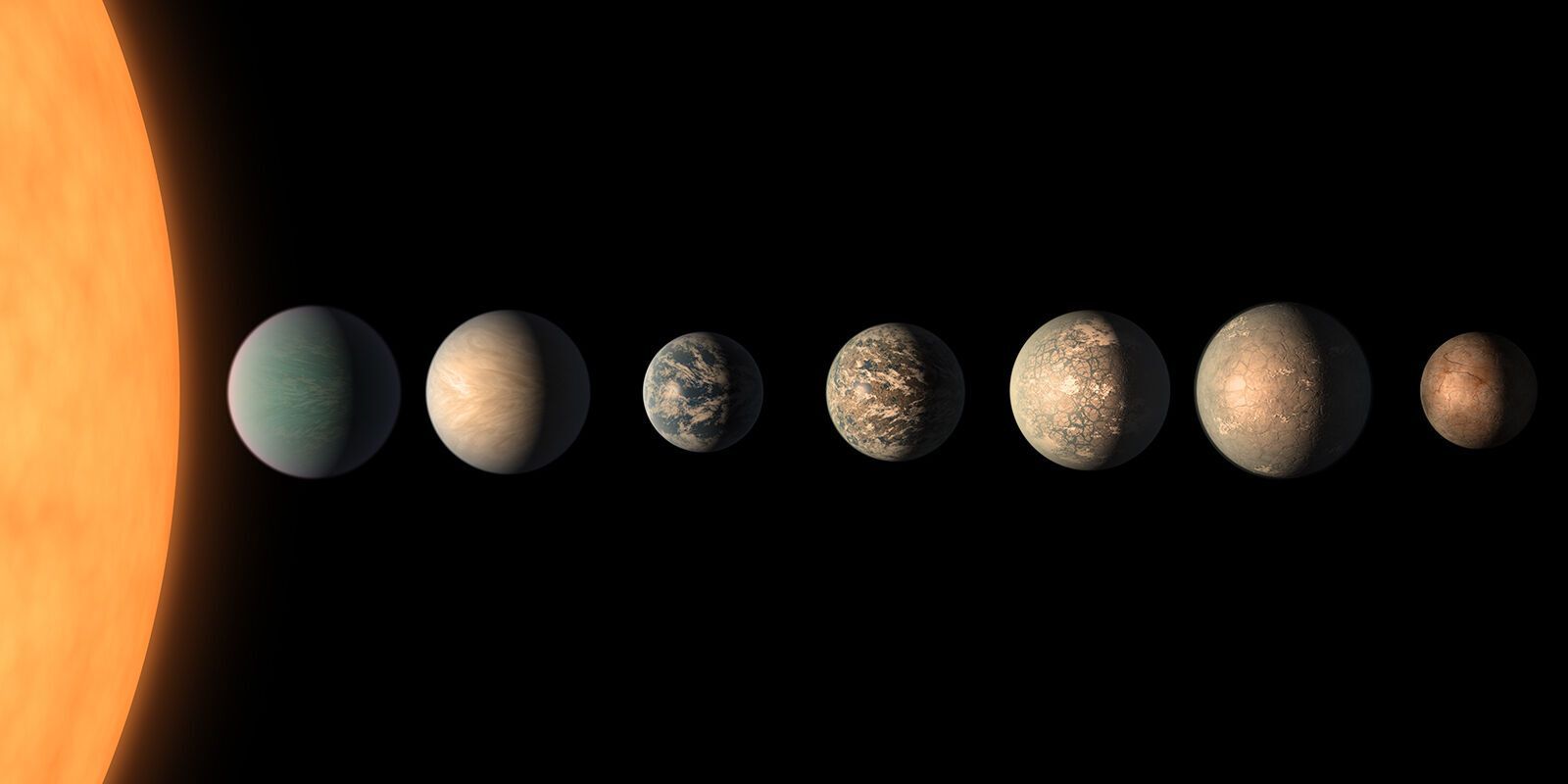Life
Life may exist on four exoplanets near Earth, but there's bad news
None of today's space observing technology allows mankind to know for sure whether even relatively close exoplanets in the Trappist-1 system have an advanced life form. Even NASA's most powerful James Webb Space Telescope cannot help solve this mystery.
This is according to a study published on the Arxiv preprints website. The authors of the study suggest building a large telescope that would be able to detect oxygen in the atmosphere of distant planets.
The Trappist-1 planetary system is about 40 light-years from Earth and has seven Earth-sized planets, four of which orbit within a suitable zone of the star for life. But there is no way for Earth scientists to know for sure if life in any form exists there.
Existing technology and instruments allow people to directly observe some exoplanets and detect water molecules in their atmospheres. However, the fact is that all the planets that have been observed are gas giants, such as Jupiter, which has a mass 318 times greater than Earth. And astronomers simply cannot see the Earth's distant twins directly.
Therefore, to study such planets, a scientific trick is used to study their atmosphere.
We are talking about the transit method of study, which consists of observing a planet at the moment when it passes between an observer from Earth and its star. At this point, Earth astronomers notice a decrease in the observed brightness of the star. But that's not all. While the exoplanet is in front of the star, some of the star's light interacts with the planet's atmosphere before it reaches us.
Thus, by analyzing the spectrum of the star during such a transit, Earth scientists can determine what light was absorbed by the atmosphere and, based on this knowledge, determine the composition of the distant planet's atmosphere.
The authors of the study set out to determine whether such data is sufficient for scientists to accurately say that there is life on this or that exoplanet. After all the analyses, they concluded that this is not enough, so new technology and new instruments are needed to help find extraterrestrial life.
They suggested that in the near future they focus on building a new type of telescope, which would have mirrors of 10 meters or more, perhaps even 50-100 meters.
The team also suggests arming such telescopes with technology that would allow them to detect oxygen in the atmospheres of distant planets, since it reacts very strongly with other materials. In addition, given that atmospheric oxygen on Earth is replenished by living things, its observation on distant planets would be more than a good hint of the existence of life.
The bad news, however, is that even with new telescopes yet to be built, it would probably take decades of observations of exoplanets to filter out the signal from the noise.
The problem is that even future large telescopes will only be able to pick up a few pixels of light from a star, and tens or hundreds of transits would have to be observed to get accurate results.
In the study, scientists made calculations for the Trappist-1 system. The star at the center of the system is a red dwarf, so the planets within the habitable zone have orbital periods of 4 to 12 days. If these planets have an atmosphere with a lot of free oxygen, it would take thousands of transits to get a positive result, the researchers calculate.
However, it would take 16 to 55 years of observations to have fully reliable data on the presence of oxygen.
This is how pixelated the Trappist-1 system is seen by modern telescopes:
Previously OBOZREVATEL also reported that scientists have recently discovered a planet that violates the known rules of the universe.
Subscribe to OBOZREVATEL channels in Telegram and Viber to keep up with the latest news.




























